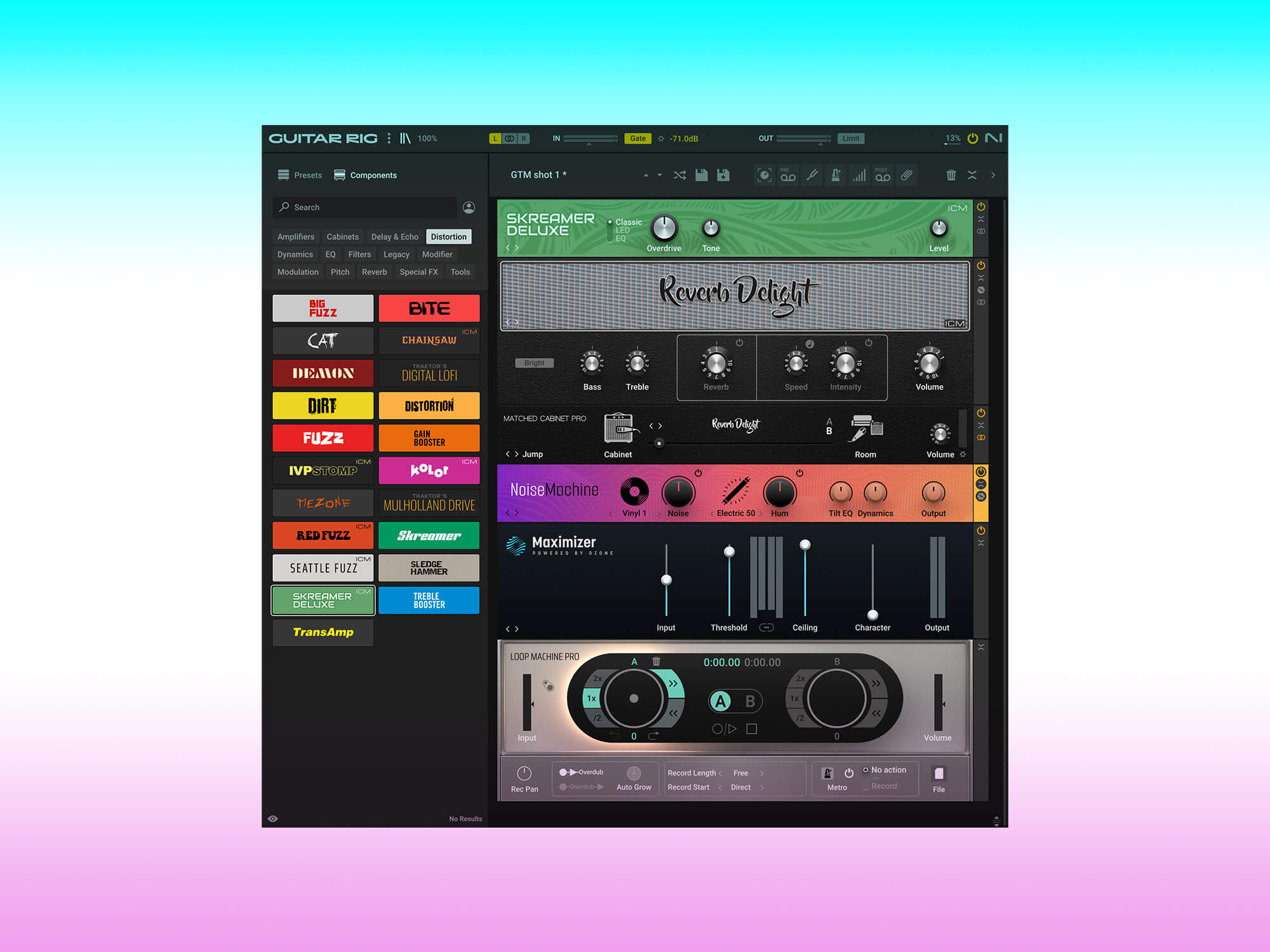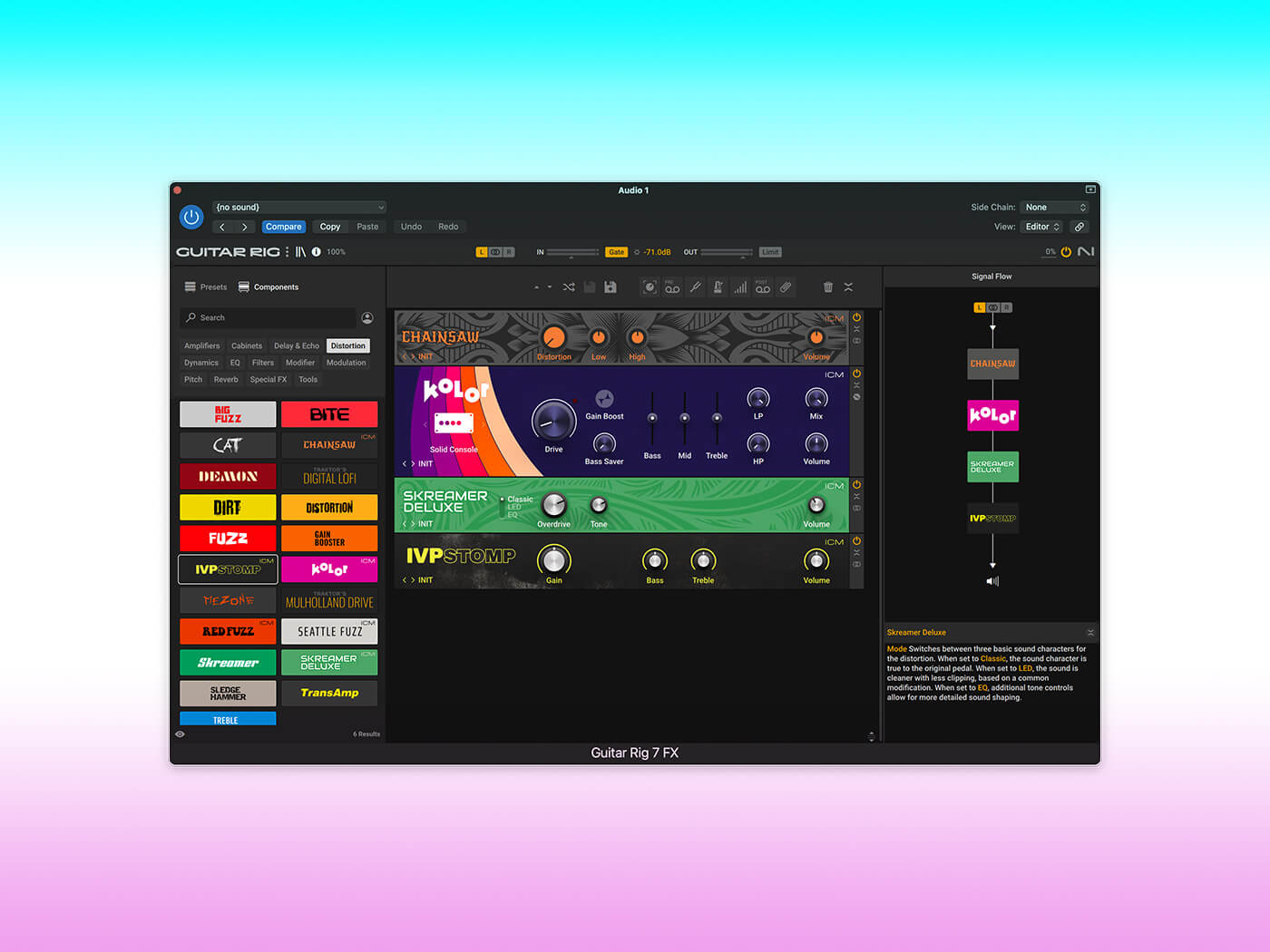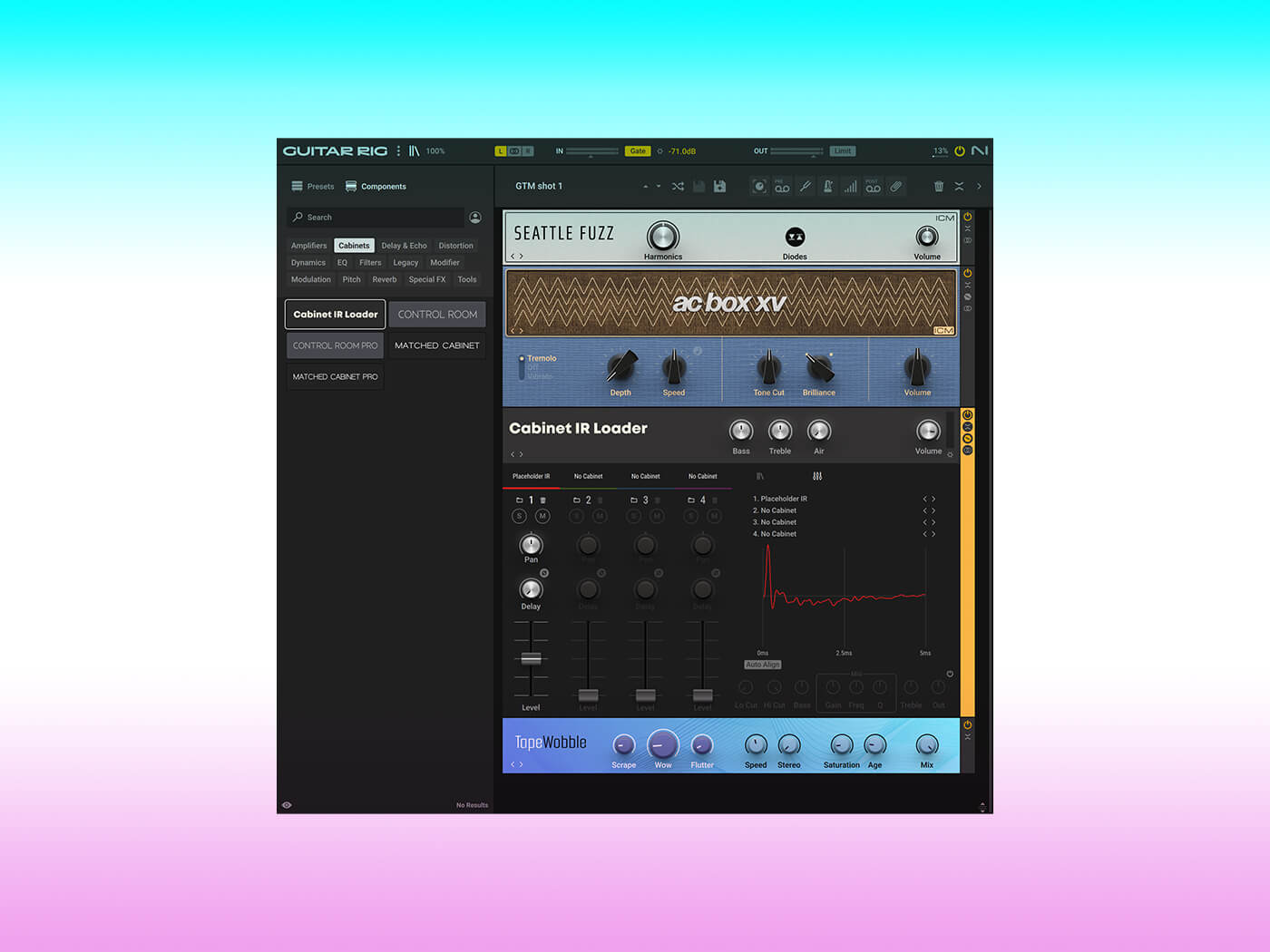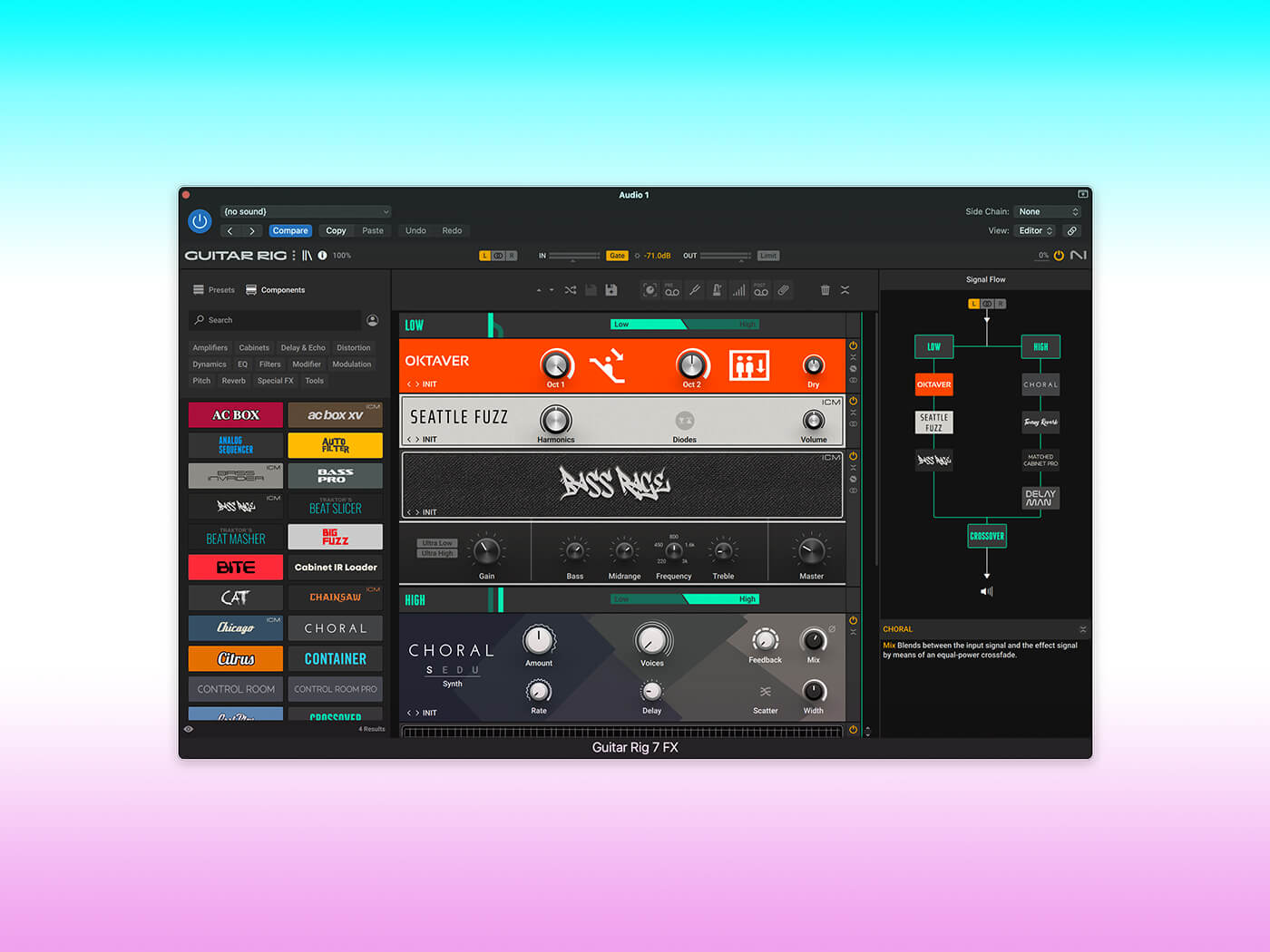Native Instruments Guitar Rig 7 Pro gives guitarists and producers more flexibility than ever
The latest version of NI’s guitar amp and effects modelling software joins an increasingly crowded market – can Guitar Rig 7 Pro still compete?

Native Instruments Guitar Rig 7 Pro
Review Overview
Our rating
8
Our verdict
⊕ Ability to process high frequencies, low frequencies or left/right separately
⊕ Modded effects offer subtle flavour differences
⊕ Inclusion of effects from other software
⊕ Signal chain view makes routing easy
⊖ Older emulations still sound a bit generic
⊖ Needs some lower-gain drive emulations
£179/$199/€199 (upgrade prices available for existing users), native-instruments.com
Native Instruments’ Guitar Rig has now been around for nearly 20 years (which makes us feel very old). For nine long years, though, there were no updates to the software at all, until Guitar Rig 6 arrived in 2020. Three years on, we have another update that brings some impressive new tones that we think you’ll love – even if some of the older sounds still need a refresh.
Version 7 adds four new amps that have been modelled using what NI refers to as ‘Intelligent Circuit Modelling’ (ICM), which uses machine learning to capture the nuances of the amps and effects.
These include:
- Super Fast 100 – a clone of a high-gain Soldano
- Reverb Delight – a Fender 65 Reverb
- AC Box XV – a Vox AC30
- Bass Rage – a high-gain bass amp.
New amp sounds
Fortunately, we possess two of these physical amps and can compare the sounds to the real thing. The Reverb Delight is excellent – it feels and sounds exactly like a real Fender amp. The high frequencies have the clarity that one expects from this amp, with the warmth from the mids when running clean.
The AC Box XV isn’t so close to our reissue AC30. The sound is natural, but it doesn’t have that ear-splitting top end that you’d expects from a Vox. Additionally, the ac box xv breaks up a little earlier than the real thing; there’s a lot more headroom than NI has modelled.
The Super Fast 100 and the Bass Rage also respond naturally to the dynamics of an instrument and add some useful new high-gain sounds for those that need them, all meticulously modelled with NI’s ICM technology.

Effects
The benefit of Native and iZotope’s new Music Production Suite is the inclusion of a wide range of new effects for use within Guitar Rig 7 Pro. This includes some of the iZotope Trash presets and some sounds from NI’s Reaktor. These are seriously rewarding inclusions for guitar software; Trash adds additional colours of fuzz, while Raum creates big, pleasing washes of reverb similar to those found in the ambient algorithms in the Strymon Big Sky.
The other effects of note are the new models that NI has added. The distortion effects have been treated to the ICM capture process and the high quality of the sounds reflects this.
Skreamer Deluxe is an emulation of the ubiquitous Tube Screamer from Ibanez, which has a characteristic mid-hump that pushes amps harder around 750 Hz. As a replacement for the previous Skreamer model in Guitar Rig, the difference is noticeable. The original Skreamer always felt a bit fizzy and thin without the characteristic warmth provided by a genuine analogue drive pedal. The Deluxe feels much more like a real Tube Screamer and the addition of some mods (diode clipping emulations, an additional EQ circuit etc) is a nice touch for all those wannabe circuit tweakers.
The other new overdrive effects models are emulations of the Boss Heavy Metal, a Big Muff and a rackmount preamp. These all respond much more naturally to instrument dynamics than a lot of other software pedal emulations.

Routing and tools
Guitar Rig 7 Pro now features an upgraded looper, signal modifiers and a range of routing tools. Frankly, the looper requires a hardware controller to operate effectively – but with a footswitch could easily be set up for some solo jams.
There are now various signal-splitting options; not just left and right, but mid/side and through a crossover for different high- and low-frequency processing. This last option is particularly useful for creating complex tones in which the bass frequencies go through an octave pedal, a fuzz and a bass amp, while the high frequencies are kept clean for clarity. The routing view on the right-hand side of the screen is vital for keeping track of everything here.

ICM
NI’s modelling technology has made a significant difference to the quality of the sounds within Guitar Rig 7 Pro. Previous iterations of the software provided amp and effect models that were usable and in the right ballpark, but never spectacularly close to the real thing – consequently, we’d always rather record a real amp with a mic.
However, the quality of modelling now available in Kemper Profilers, the Strymon Iridium and Walrus Audio ACS-1 stompboxes has significantly raised the bar for amp modelling. Meanwhile, software from Universal Audio and Two Notes provide software emulations of amps and cabs for those working in the box, and these are also incredibly natural sounding and feeling.
We can honestly say that Guitar Rig 7 Pro has now joined this elite club with its new amp and effects modelling technology; they feel and sound just like the real thing. We wouldn’t hesitate to capture a DI’d clean guitar and run it through the Skreamer Deluxe and into the Reverb Delight. All NI needs to do now is to go back and re-model some of its existing amp models (particularly a Marshall for that iconic British amp sound) and it’ll be perfect!
Guitar Rig 7 Pro is an excellent inclusion within the Music Production Suite. Previous versions of the software have felt too generic and not responsive enough to really feel or sound like the models the software was supposed to be emulating. The latest version fixes that, but the distortion pedal emulations still tend to favour the high-gain sounds without including a wider range of overdrive ‘colours’. A Bluesbreaker or a Klon Centaur model would create contrast and complement the product enormously for those of us who prefer to stack lower-gain circuits.
Still, the current offering is already excellent. and Guitar Rig 7 Pro will definitely become our amp and pedal emulation software of choice for production.
Key features
- 26 amp models inspired by classic amps
- 115 effects and processors
- Full stereo routing
- New Intelligent Circuit Modelling
- New sidebar to view signal chain